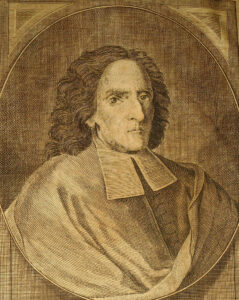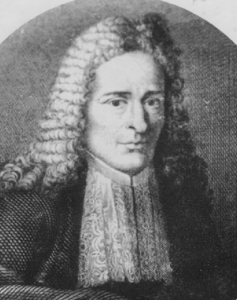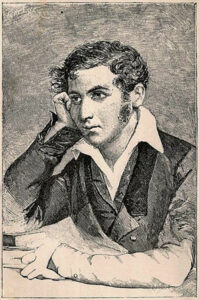Critical editions
 GIAMBATTISTA VICO
GIAMBATTISTA VICO
ORIGIN AND PURPOSE
As early as 1972, in the 2nd issue of the ‘Bollettino del Centro di studi vichiani’ (Bulletin of the Centre for Vico Studies) – which he founded – Pietro Piovani presented the project for a national critical edition of the works of Giambattista Vico. He asserted the need to return to the original Vico texts by emending them from the layer over them superimposed by the manipulations and rearrangements carried out by Benedetto Croce and especially Fausto Nicolini. As early as 1904, in fact, Benedetto Croce had begun, with his first draft of the Bibliografia vichiana, the collection and publication of papers and documents that are now part of the invaluable collectio viciana, still preserved in Croce’s Neapolitan home. From 1911 onwards, Fausto Nicolini joined the project and from then on collaborated on all the Vico works edited by Croce.
The layer of Croce’s and Nicolini’s interventions conditioned and directed the reading of Vico by the following generations, accustoming readers to a completely modernised spelling, to an absolutely comprehensible punctuation, to a single typeface that did not provide for diversifications, aiming, as already mentioned, to offer first and foremost a ‘readable’ Vico. At the same time, however, as the work on the various versions of the Scienza nuova in particular demonstrates, this communicative intent paid the price for a substantial standardisation of Vico’s thought, emphasising its unity and purging it of excessive oscillations.
Vico’s editions following Nicolini’s work remained pervaded by his own approach for a long time, and only slowly did the first cautious innovations begin to make their way through, as in the case of Flora (1957), Rossi (1959) and Badaloni-Cristofolini (1971-1974).
After the debate hosted in the ‘Bollettino’ from 1973 onwards, the need to propose a Vico that was no longer so much, or at least not only, comprehensible emerged systematically in the scholarly community, stimulated by the Centre for Vico Studies to reflect on the edition; the idea of favouring fidelity and respect for the tormented and laborious vicissitudes of Vico’s writing was thus affirmed. In fact, the most peculiar characteristic of Vico’s texts is their continuous and incessant revision, both in the manuscript phase and in the printed phase: in the exemplars offered as gifts, in the copies that have just come out of the printing house. The author’s own explicit wishes regarding the publication of his writings passed, in more than one case, through successive phases and stratifications. As Antonio Garzya has emphasised, it is essential in Vico’s case to distinguish between the author’s variant – substitution of the primitive redaction that is later repudiated – and what he himself called ‘autoglossa’ – integration and modification of a text that continues to be accepted.
GENERAL APPROACH
The approach inaugurated by the Centro di studi vichiani’s national critical edition has thus been based on the preliminary rejection of the edition witness provided by Nicolini, in favour of the original, in order to directly confront the pathologies and problems raised by it.
The general criteria that still inspire the national edition of Vico are – without prejudice to respect for the specificity of each individual work – all inspired by the most current conception of ecdotic work
- explication of sources: texts are always preceded by a description of the manuscript(s) and printed texts used for the collation of variants or for critically reconstructing the final text;
- transparency of exegetical responsibility: an introduction is always preceded, giving an account of the choices made and the tradition of the text;
- reasoned articulation of the apparatuses: the critical apparatus, placed at the bottom of the page, includes the apparatus of sources – which are always the explicit ones -, the apparatus relating to the form of the text and any annotations by the editor (all referred to the number marking the line, which continues five by five per chapter), while the commentary notes are placed at the end of the text;
- formalisation of ecdotal signs: round brackets are used for the unravelling of abbreviations, hooked brackets for the hypothetical reconstruction of a missing or illegible text, square brackets for a text to be deleted;
- fidelity to the Vichian style: the graphic form was almost always respected, as were punctuation and subdivisions within the text;
- supporting function of the appendices: the appendices include all texts that can serve as direct or indirect support to the edition but cannot be included in it.
Scientific Committee for the Critical Edition of Vico’s Works
Fulvio Tessitore (Presidente), Antonio Garzya†, Giuseppe Cacciatore, Enrico Nuzzo, Fabrizio Lomonaco, Manuela Sanna
The book series is currently published by:
Edizioni di Storia e Letteratura
00165 – Rome
 Antonio Vallisneri
Antonio Vallisneri
Origin and collaborations
The work on Vallisneri, initially concentrated on the identification, collection and edition of the letters of his epistolary, was promoted from the beginning of the 1980s in the context of the activities – still under the direction of Mario Dal Pra – of the ‘Centre for the Study of the Philosophical Thought of the 1500s and 1600s in Relation to the Problems of Science’ at the CNR in Milan (CSPF-CNR), later merged into the ISPF.
In 1991 and 1998, the first two volumes of the critical edition of Vallisneri’s Epistolario were published in the CSPF series; these collected 476 letters, written by the scientist from 1679 to 1713, in which the scientific and cultural centrality of the published epistolary documents came to the fore, and which can be said to have paved the way for the valorisation of this author and have laid the groundwork for the approval, following the ISPF’s impulse and request, of the National Edition of his works by the Ministry of Cultural Heritage and Activities in 2000.
In addition to the ‘Institute for the History of Philosophy and Science in Modern Age’, which is the promoting body and the institutional context for the National Vallisnerian Edition, many institutions have also supported it: the ‘Lazzaro Spallanzani Study Centre’ of Scandiano, the Institut d’Histoire de la Médecine et de la Santé of the University of Geneva, the Department of Biology of the State University of Milan, the Department of Humanities of the University of Eastern Piedmont; the International Insubric Centre ‘Carlo Cattaneo’ and ‘Giulio Preti’ of the University of Insubria; the State Archive of Reggio Emilia, the Estense Library of Modena and the ‘Panizzi’ Library of the Municipality of Reggio Emilia. Other important national and international public and private institutions and organisations also collaborated with this initiative.
Structure and Editorial Features
The National Edition Project envisages the publication of all of Vallisneri’s works by the publisher Olschki in Florence, for a total of over 40 volumes distributed in two series and an inventory and online edition of the correspondence. The first series is intended to contain the edition of the manuscripts. The second to offer the works edited directly by the scientist. The online database is intended to host the inventory and the edition of his impressive correspondence. In addition to these, there is also a section, called ‘Biblioteca dell’Edizione Nazionale delle Opere di Antonio Vallisneri’ (Library of the National Edition of the Works of Antonio Vallisneri), which has the task of hosting the volumes containing the studies and materials functional to the editorial work. To date, twenty-one volumes have been published between editions and volumes of the ‘Library’, in addition to a considerable amount of studies, research and editions published elsewhere, but which can be traced back to the work of the Vallisnerian research group.
The National Edition has been designed, in line with the current direction of national editions, as a critical edition and has therefore given itself consequent editorial criteria. It has also chosen to equip the editions of the texts with a critical historical commentary apparatus, which highlights the explicit and implicit bio-bibliographical references. Each edition has an introduction that illustrates the characteristics and meaning of the text in light of the author’s thought and works and places it in the context of the debate of the time.
Website and the ‘Inventario del Carteggio’ (Inventory of Correspondence)
The website (www.vallisneri.it) was conceived and realised as a reference and documentary support point for the research activity connected to the Project and as a continuously updated centre of information on the author, his scientific environment and the initiatives promoted by the National Commission. The website has several sections.
The section reserved for contributors contains the editions in their various stages of progress and a variety of reference materials useful for Vallisnerian ecdotic and research work. In addition to the restricted section, the home page has three different areas, which are in turn divided into sub-sections. The first area provides information on the National Edition and its activities. The second area summarises news about Vallisneri and his work. The third area consists of three sections, one dedicated to the ‘Catalogue of the Bartolomeo Corte Fund’, one to the ‘Inventory of A. Vallisneri’s Correspondence’ and one to the ‘Inventory of P.A. Micheli’s Correspondence’.
The ‘Inventory of A. Vallisneri’s Correspondence’ is an instrument of utmost importance for research and consultation by scholars. The ‘Inventory’ consists, at the current state of research, of the filing of 12,079 letters, the transcription of 2,541 letters and the inclusion of 1,184 documents in image format. The inventory allows searching the letters by senders and addressees, places of departure and arrival, current place and institution of preservation, possible previous editions, consistency and characteristics of the letters. In the database it is possible to enter the registry of letters and their transcription. The presence of these identifying fields and the information related to them greatly facilitates research and allows immediate visualisations of the mass of the correspondence and the network of correspondents, the subjects under investigation and the documents in which they are found.
National Commission
Guido Canziani (President); Maria Teresa Monti (Secretary-Treasurer); Dario Generali (Scientific Coordinator); Gino Badini († 23/IX/2013); Walter Bernardi; Marino Buscaglia; Marta Cavazza; Bernardino Fantini; Maurizio Festanti; Paola Manzini († 28/XII/2021); Renato Mazzolini; Gianni Micheli; Ernesto Milano; Giorgio Montecchi; Mariafranca Spallanzani.
 Carlo Cattaneo
Carlo Cattaneo
Carlo Cattaneo’s thought and activity had a crucial impact – albeit from often minority positions – on the formation of the Risorgimento culture and civil philosophy. After the first 19th century collections, in the spring of 1946 the Mayor of Milan Antonio Greppi set up a special committee dedicated to the edition of Cattaneo’s writings and to the archival reorganisation of his papers; the following year it became the ‘Italo-Swiss Committee for the publication of the works of Carlo Cattaneo’ under the chairmanship of Alessandro Levi (1881-1953).
The first editions of Cattaneo’s works planned by the Committee followed a thematic arrangement, which made it possible both to respect the order already adopted during the author’s lifetime and to make a reasoned choice of titles. The Committee’s edition started with the sylloge of the Scritti economici, organised in 1956 by Alberto Bertolino. This was followed by the Scritti storici e geografici, edited by Ernesto Sestan, the Scritti filosofici, collected by Norberto Bobbio, the Scritti politici, edited by Mario Boneschi and, finally, the Scritti letterari, edited by Piero Treves.
In that way ended the experience of an important publishing season, which had in fact presented a fundamental selection of the works of the Milanese intellectual; in 1986 the Cattaneo edition was officially declared Edizione Nazionale delle Opere di Carlo Cattaneo – a testament to the validity of the work carried out. The Committee thus addressed the need to restore the whole of Cattaneo’s writings in chronological order and according to the methodologies of the most up-to-date ecdotical criteria.
The Cattaneo Project stems from a collaboration agreement stipulated between the Ispf and the Italo-Swiss Committee in 2017. Starting with the realisation of the national critical edition of the writings that appeared in the first series of the ‘Politecnico’ (1839-1844), it intends to study Cattaneo’s thought in its various aspects, paying specific attention to the historical contextualisation of his multifaceted and vast web of interests.
L’ISPF ha varato il progetto per l’edizione e lo studio delle opere cardaniane. I volumi prodotti nell’ambito del progetto sono pubblicati all’interno della Collana “Filosofia e scienza in età moderna” dello ISPF. Ogni volume della serie è corredato di un’introduzione storico-filologica dedicata al testo o ai testi in esso raccolti; i testi sono dotati di apparati filologici e storici e sono completati da un index nominum e da un index rerum.